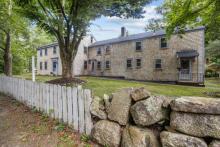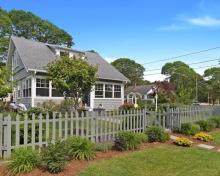Rochester forum explains Community Preservation Act
The most vocal opponents of the Community Preservation Act are sometimes the first ones to seek act funds once approved, residents learned Wednesday.
On Nov. 14, the act was explained at a public forum sponsored by the Open Space Action Committee. The group hopes Special Town Meeting voters will place a question on the spring town election ballot to adopt the act.
If approved, the act would increase property tax bills by 1.5 percent. Funds raised through the act are set aside for outdoor recreation and open space, historic preservation and affordable housing projects. Town-raised funds are matched by the state with a percentage that changes year to year. This year the figure was 26 percent.
Stuart Saginor, executive director of the Community Preservation Coalition, explained the act with help from members of Acushnet’s and Carver’s Community Preservation Committees.
“When we first proposed the idea all three Selectmen voted against it,” said Larry Mulvey, vice chair of Acushnet’s committee. “When we did win our first customers were the Selectmen.”
Committee members vet proposed Community Preservation Act projects, which are subject to Town Meeting approval.
Spending flexibility is a hallmark of the act Saginor said, but some spending restrictions are in place. Ten percent of annual revenues must be used in each of the three categories. The remaining 70 percent can be allocated into any combination of those areas.
The money doesn’t have to be spent every year and can be saved over time for large projects, Saginor said. Throughout the state, historic preservation projects are the most popular uses for act funds, but open space spending is on the rise.
Private groups are also eligible to apply for act funds from the town.
“If it serves the community and the project benefits the public it is eligible for [Community Preservation Act] funding,” he said.
Those projects would be considered by the Community Preservation Committee, which can have at least five members but not more than nine. The committee would be comprised of one representative each from the Conservation Commission, the Planning Board, the Historic Commission, the Recreation Committee, and the Housing Authority. Towns may add four at-large members.
Open Space Committee member Rosemary Smith said her group did not have a specific project in mind when they decided to put the act before the town. However, she said securing open space parcels was a concern. She said residents would be encouraged to approach the committee with ideas.
Opponents of the act, including Selectmen and the Planning Board, said the act would raise taxes and harm low-income residents and the elderly.
Saginor said the average taxpayer will see a $47 increase in their bill. The town has the option of including a number of exemptions, including $100,000 on everyone’s property value.
According to Saginor, a single person, who is 60 or older, living in an owner occupied home would be exempt if their income is $54,810 or less. The income threshold for two people at that age is $62,640 and $70,470 for three or more people. Residents must alert the assessors’ office when seeking the exemption though.
Rochester’s Special Town Meeting is scheduled for Monday, Nov. 25 at 7 p.m. in Rochester Memorial School.













